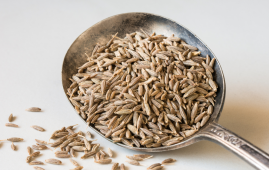

For years, doctors and clinicians have known that lupus, an autoimmune disease, affects women nine times more than males. Some of the mechanisms that contribute to the disease’s high prevalence in women have remained unknown, but Johns Hopkins Medicine researchers have discovered answers concerning the disease’s frequency in females in a recent study researching immune system processes in lupus and the X chromosome.
Lupus and its various symptoms of muscle and joint pain, skin rashes, renal issues, and other complications throughout the body are caused by a number of dysregulated genetic and metabolic processes. One such mechanism involves the immune system’s toll-like receptor 7 (TLR7) protein, which in lupus reacts to the body’s own RNA, which act as messengers of genetic information. TLR7’s response to RNA causes an immune response that harms healthy tissue.
Researchers honed in on this TLR7 immune response in lupus in the full article, published in the October volume of the Journal of Clinical Investigation Insight, looking specifically at how a piece of genetic material only found in women, known as X-inactive specific transcript (XIST), could trigger TLR7’s immune system response. XIST is a form of RNA that is critical in inactivating one of the two X chromosomes found in female cells, preventing unbalanced gene expression in females.
“XIST has previously been implicated in autoimmunity, but more as something that could prevent autoimmune conditions like lupus, rather than drive the disease’s development,” explains study author Erika Darrah, Ph.D., an adjunct professor of medicine at Johns Hopkins University. She has since left the university, but she was in charge of the project. “Our findings show the opposite, that XIST actually plays a role in promoting autoimmunity — increasing the susceptibility to lupus and its severity in women.”
Using cellular tests, the researchers first determined if XIST could bind to TLR7 and start the receptor’s immunological response. They discovered that XIST could significantly attach to TLR7 and stimulate the creation of molecules known as interferons, an immune system protein found in high amounts in lupus that contributes to tissue damage. Rather of protecting the body from the deleterious effects of TLR7 and interferon, these experiments demonstrated that XIST drove the process of an excessive immune response and thereby contributed to the development of lupus.
“XIST has now taken on a different role, that of an alarm signal related to autoimmunity,” explains study author Brendan Antiochos, M.D., assistant professor of medicine at Johns Hopkins University. “The immune system activation through XIST and TLR7 is female-specific, helping explain the observation that lupus is so much more common in women compared to men.”
Researchers analyzed XIST levels in individuals from two lupus cohorts to further investigate XIST’s role in lupus. The researchers examined XIST levels in blood samples from patients at the Johns Hopkins Lupus Center, as well as data from another study that revealed XIST and interferon levels in white blood cells obtained from the kidneys of people with lupus. They discovered that not only did XIST levels in the kidney correspond with higher interferon levels, but also those with more XIST in their blood cells had worse disease severity and lupus symptoms.
According to Darrah and Antiochos, these findings may implicate XIST in additional autoimmune disorders that are more common in women, and that more research into this female-specific process is needed.
According to the researchers, understanding XIST’s function in lupus formation may pave the way for novel medicines that target the XIST-TLR7 pathway, as well as provide an additional explanation for patients who may be confused about the cause of their disease.
more recommended stories
 Genetic Diversity Explains Obesity Risk Differences
Genetic Diversity Explains Obesity Risk DifferencesCross-ancestry Study Identifies Novel Obesity Genes.
 Meniscal Tear and OA Pain Improved by Home Exercise
Meniscal Tear and OA Pain Improved by Home ExerciseHome Exercise Proves Effective for Knee.
 AI ECG Model Outperforms Standard STEMI Triage
AI ECG Model Outperforms Standard STEMI TriageNovel AI ECG Model Outperforms Standard.
 New Software Transforms Real-Time Pathogen Surveillance
New Software Transforms Real-Time Pathogen SurveillanceReal-Time Pathogen Surveillance Software Transforms Environmental.
 Bright Nights May Increase Stroke, Heart Failures in Adults
Bright Nights May Increase Stroke, Heart Failures in AdultsBright Nights are tied to increased.
 Cannabis Use Linked to Regular Tobacco in US Youth
Cannabis Use Linked to Regular Tobacco in US YouthCannabis Use and Tobacco Risk: A.
 Mediterranean Diet Reduces Endometriosis Risk in Women
Mediterranean Diet Reduces Endometriosis Risk in WomenMediterranean Diet and Endometriosis: A Promising.
 Night Shifts May Trigger Irritable Bowel Syndrome (IBS)
Night Shifts May Trigger Irritable Bowel Syndrome (IBS)Night Shifts and Digestive Health: Linking.
 Blood test shows promise for faster ALS diagnosis
Blood test shows promise for faster ALS diagnosisSummary / Key Points A UCLA.
 Caraway seed chemistry yields anticonvulsant leads
Caraway seed chemistry yields anticonvulsant leadsA team led by UNLV researchers.

Leave a Comment